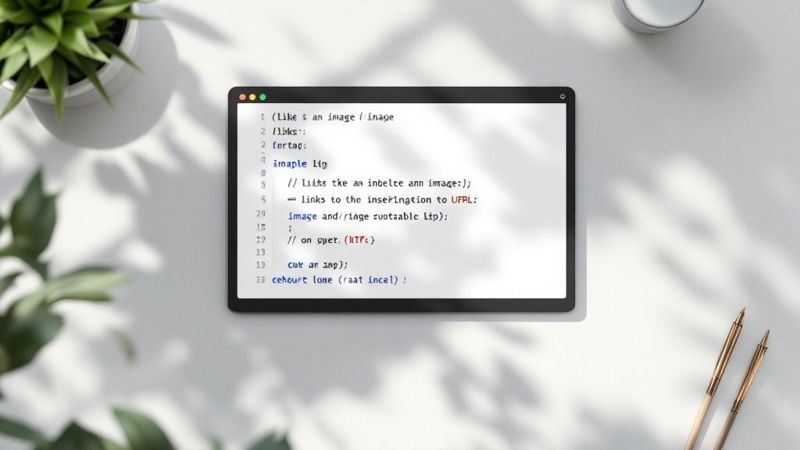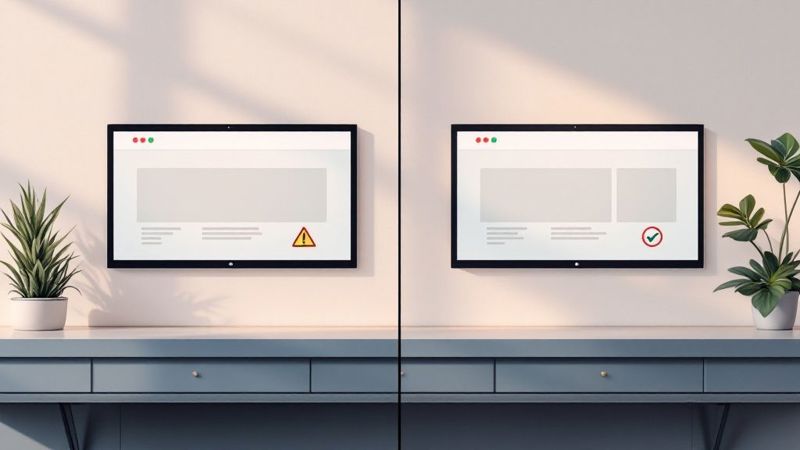The Power of Clickable Visuals: Why Image Hyperlinks Matter
Images are powerful communication tools. They grab attention, evoke emotions, and tell stories more quickly than text. But a static image, while visually appealing, can sometimes leave the user wanting more. That's where the image hyperlink comes into play, transforming a simple visual into a gateway to further information and deeper engagement.
Adding a hyperlink to an image significantly elevates its functionality. The image is no longer just a passive element; it becomes an active part of the user's journey. Imagine a website showcasing a portfolio of architectural photographs. Clicking an image could lead to a dedicated project page, complete with details, testimonials, and even a virtual tour. This intuitive navigation enhances the user experience.
The Psychology Behind the Click
Why are image hyperlinks so effective? One key factor is their visual nature. Our brains process images 60,000 times faster than text, leading to immediate engagement. Images also create stronger emotional connections, leading to a more memorable user experience. This means users are drawn to images and more likely to interact with them than standard text links.
This translates into measurable improvements in website metrics. Clickable product images are essential for e-commerce platforms. For instance, clicking a product image in an online catalog takes the user to a detailed product page. This not only increases engagement but also improves conversion rates. Studies show that interactive elements like clickable images can increase website engagement by up to 20% and conversions by up to 15%. This underscores the value of image hyperlinks in digital marketing. Learn more about adding hyperlinks in Looker Studio.
Text Links vs. Image Hyperlinks
To further illustrate the benefits of image hyperlinks, let's compare them to traditional text links. The following table breaks down their key differences and best use cases.
| Feature | Text Links | Image Hyperlinks | Best Use Case |
|---|---|---|---|
| Visual Appeal | Low | High | Product showcases, portfolio displays |
| Engagement | Moderate | High | Calls to action, interactive content |
| Information | Direct, Concise | Implicit, Contextual | Navigation menus, in-text citations |
| Accessibility | Easily implemented | Requires careful design | All scenarios, especially for visually impaired users |
This table highlights the strengths of each link type. While text links excel in providing direct information, image hyperlinks shine in visual appeal and engagement. Careful consideration of context and accessibility is crucial for effective implementation.
From Functionality to User Experience
The image hyperlink has grown from a simple technical feature to a core component of user experience design. By strategically incorporating image hyperlinks, websites create seamless and intuitive navigation. This leads to increased user satisfaction, higher conversion rates, and a stronger online presence. Well-implemented image hyperlinks guide visitors efficiently, ensuring they find the information they need quickly and easily. This contributes to a positive user experience overall.

Adding a Hyperlink on Image: Platform-by-Platform Mastery
Understanding the power of hyperlinked images is crucial for effective online communication. This guide explores the practical steps involved in adding hyperlinks to images across various platforms, from website development to email marketing.
For the Web Developers: HTML and CSS
For web developers using HTML and CSS, the process is quite straightforward. You simply wrap the image within an anchor tag <a>.
<a href="https://www.example.com/destination-page">
<img src="image.jpg" alt="Image Description">
</a>
This snippet links the image "image.jpg" to "example.com/destination-page". Descriptive alt text is essential for accessibility and SEO. CSS can enhance the user experience by providing visual feedback on hover, indicating the image's clickability. For a more detailed guide, check out this helpful resource: How to master adding a hyperlink to an image.
Content Management Systems (CMS)
Most Content Management Systems (CMS) offer a user-friendly approach. In WordPress, you can insert an image, click it, and use the built-in link insertion tool. Wix provides a similar visual editor for adding links through image settings. Shopify also facilitates linking product images directly to product pages, simplifying the process without direct HTML coding.
Email Marketing and Beyond
Image hyperlinks are vital in email marketing. Platforms like Mailchimp and Constant Contact allow linking images to landing pages or products within emails, driving conversions. This functionality extends beyond email to many social media platforms. For more advanced techniques, refer to this helpful guide: How to master adding a hyperlink to an image.
Advanced Techniques: Data Visualization and Looker Studio
Hyperlinking images also plays a role in data visualization. Looker Studio's HYPERLINK function allows creating clickable images linked to other pages or websites, enhancing interactive reports. This feature is particularly powerful for product catalogs, enabling direct navigation to product pages. As of 2023, Looker Studio supports dynamic links based on report data, such as linking to specific email addresses. Learn more about Looker Studio.
Mobile Optimization
Optimizing hyperlinked images for mobile devices is paramount. This involves compressing image sizes for faster loading times on mobile networks. It's also essential to ensure the clickable area is large enough for easy tapping on smaller screens, enhancing the mobile user experience.

Crafting Image Hyperlinks That Actually Convert
Adding a hyperlink to an image is technically simple, but creating one that converts involves understanding user behavior. This means strategically considering the image's appearance, placement, and the overall user experience.
Optimizing Image Presentation for Clicks
Image quality and sizing are crucial. High-resolution images grab attention, but large files can slow loading times, impacting user experience. Balance visual appeal with optimized file size. Image dimensions should also suit the context. A tiny thumbnail, even if high-quality, might not be as effective as a larger image for a call to action.
Placement is key. Eye-tracking studies reveal predictable user scanning patterns on web pages. Placing hyperlinked images in high-visibility areas, like the top left or center, increases clicks.
Visual Cues and Accessibility
Subtle visual cues signal clickability. A slight border change on hover, a glow effect, or an arrow icon can indicate interactivity. Maintain consistency across your website for a cohesive experience.
Accessibility is paramount. Descriptive alt text benefits visually impaired users with screen readers and improves SEO. In software like Relyence, image hyperlinks organize large datasets, linking product component images to specifications. Learn more about how hyperlinks and images enhance data fields here.
Consistent User Experience
A consistent experience builds trust. Clicking a hyperlinked image should lead to a relevant page. Avoid unexpected destinations. Maintain consistent visual styles for hyperlinked images to prevent confusion. For further reading on image use in marketing, check out this article on how to master email marketing images.
Mobile Considerations
Mobile optimization is essential. Images should be responsive and scale correctly on smaller screens. The clickable area must be large enough for comfortable tapping on mobile devices. This involves touch-friendly design with ample spacing around clickable elements and clear visual distinctions between interactive and static images.
Beyond Basics: Creative Applications of Image Hyperlinks
Adding a hyperlink to an image elevates its functionality beyond just a static visual. It opens doors to creative applications that enhance user engagement and drive conversions. Let's explore some advanced strategies that leverage the power of clickable images.
Image Mapping: Turning Images Into Interactive Experiences
Image mapping transforms a single image into multiple clickable zones, each linked to a different destination. Think of an interactive floor plan of a building where clicking on a room reveals details about it. Or perhaps a product image where clicking on specific features displays their specifications. This approach enriches user experience by providing a dynamic and engaging way to explore information.
For example, imagine an online clothing store. A single image of a model could be mapped to allow users to click directly on the shoes, the shirt, or the accessories. This would take them straight to the product page for that specific item. This significantly reduces purchase friction and can lead to increased conversion rates.
Thumbnail Galleries: Driving Deeper Engagement With Visual Content
Content marketers often use thumbnail galleries to showcase various pieces of visual content. By adding hyperlinks to these thumbnails, they can direct users to blog posts, videos, or other related pages. This encourages deeper engagement with the visual content and keeps users exploring the website, reducing bounce rates and increasing time on site.
This approach also allows for more effective organization of visual content. For instance, a photographer can create a thumbnail gallery showcasing different photography styles, each linked to a portfolio featuring images in that specific style. This makes it easier for potential clients to navigate their work and find exactly what they’re looking for.
Social Media Strategies: Clickable Images That Drive Qualified Traffic
Brands are increasingly using clickable images on social media to drive traffic to specific landing pages. Adding a hyperlink to image posts directs users to product pages, promotional offers, or contest entry forms. This allows businesses to connect their social media presence directly to conversion-focused campaigns, resulting in more qualified leads and improved ROI.
Infogram, a data visualization platform, lets users add links and images to charts. This allows for linking company logos within a comparison chart directly to their websites. This enhances user engagement and provides seamless navigation. Learn more about interactive charts here.

Elevating User Experience With Interactive Image Links
Hyperlinks on images offer so much more than just a static click-through to another page. By adding interactive elements, you can transform simple image links into engaging experiences that grab user attention and encourage interaction. This creates a more dynamic and enjoyable user experience, ultimately making your website more effective.
The Power of Subtle Visual Feedback
High-performing websites often use hover effects and micro-animations to provide satisfying visual feedback when users interact with image hyperlinks. These small cues, like a slight change in opacity, a subtle glow, or a gentle scaling effect, clearly signal that the image is clickable without being distracting. For example, a subtle zoom effect when hovering over a product image can draw the user's eye and encourage them to click. This enhances the user experience by offering a clear visual cue without overwhelming the user.
Lightbox Implementations for Seamless Content Consumption
** Lightboxes** offer a sleek way to display larger images without interrupting the user's browsing experience. When a user clicks on a smaller, hyperlinked image, a lightbox overlays the current page with a larger, high-resolution version. This lets users enjoy visual content in more detail without navigating away from the main page. This maintains context and encourages deeper engagement with the content.
Building Navigation With Strategically Linked Images
Sophisticated websites use image hyperlinks to create entire navigation systems, especially in visually-driven industries like fashion or photography. Imagine a homepage with a grid of images representing different product categories. Clicking an image takes the user directly to that category page. This visually appealing approach simplifies navigation and provides a more engaging browsing experience. For further insights into using images effectively, check out this article: How can personalized images increase email engagement?
The use of hyperlinks on images also extends to specialized fields like geographic information systems. In platforms like ArcGIS, hyperlinks associated with images allow users to explore multiple photos linked to a single location, such as a landmark. This allows for viewing different perspectives, providing valuable insights for urban planning and tourism. Learn more about this functionality here.
Tracking User Interaction With Analytics
Integrating analytics is essential for understanding how users interact with your image hyperlinks. By tracking clicks and user engagement, you gather valuable data that informs design decisions. This data allows you to refine your image link strategies and optimize their placement, appearance, and function for maximum impact. You might find, for example, that images in a particular location receive significantly more clicks, leading you to prioritize that area for key calls to action.
To better understand the key metrics you should be tracking, take a look at the table below.
The following table outlines important performance indicators to monitor when using hyperlinks on images.
Performance Metrics for Image Hyperlinks
| Metric | Description | Benchmark | How to Improve |
|---|---|---|---|
| Click-Through Rate (CTR) | Percentage of users who click on the image hyperlink. | Industry average varies, aim for above 1%. | Improve image visibility, use compelling calls to action, optimize image placement. |
| Bounce Rate | Percentage of users who leave the page after clicking the image. | Aim for a low bounce rate, ideally below 40%. | Ensure the linked page is relevant and engaging, optimize page load speed. |
| Time on Page | How long users spend on the page after clicking the image. | Longer time indicates higher engagement. | Provide valuable content on the linked page, encourage exploration with related links. |
| Conversion Rate | Percentage of users who complete a desired action (e.g., purchase, signup) after clicking the image. | Varies based on the goal, aim for continuous improvement. | Optimize the linked page for conversions, use clear and compelling calls to action. |
By monitoring these metrics, you can gain insights into what’s working and what needs improvement, allowing you to continuously refine your image hyperlink strategy for better results.
Troubleshooting Image Hyperlinks: Solutions That Actually Work
Adding a hyperlink to an image is usually simple, but occasionally problems arise. This section addresses common image hyperlink issues and offers practical solutions to get them working correctly. This guide will help you efficiently diagnose and resolve these issues, ensuring your visuals always look and perform their best.
Browser Compatibility Issues
One common frustration is browser compatibility. An image hyperlink might work perfectly in Chrome but fail in Safari or Firefox. This often stems from differences in how browsers interpret HTML or CSS. For instance, certain CSS properties related to image display or hover effects may not be universally supported.
- Solution: Stick to standard HTML and CSS practices. Avoid browser-specific code whenever possible. Test your hyperlinked images across different browsers and devices to identify and fix any discrepancies.
Broken Image Links
Another frequent problem is broken image links. This occurs when the image file is moved, renamed, or deleted, or when your website's URL structure changes. Broken image links are especially common during platform migrations. These broken links create a negative user experience and can also harm your SEO.
- Solution: Regularly check for broken links using website auditing tools or browser extensions. These tools can quickly scan your entire site and pinpoint broken image links. After identifying them, update the incorrect URLs in your HTML or CMS (Content Management System). During site migrations, ensure all image paths are correctly updated to prevent widespread breakage.
Slow-Loading Linked Images
Performance is crucial for a positive user experience. Slow-loading linked images frustrate users and can lead to increased bounce rates. This is especially true on mobile devices, where network connections can be slower.
- Solution: Optimize your images for web use. Compress image files without significantly compromising quality. Use suitable image formats (JPEG, PNG, WebP) and dimensions. Implement lazy loading, a technique where images load only when they are visible in the user's viewport. This significantly improves initial page load times, especially on image-heavy pages.
Maintaining Hyperlinks During Redesigns
Website redesigns or URL structure changes can easily break image hyperlinks if not managed carefully. This can negatively impact both SEO and user experience. Preserving these links is vital for maintaining traffic flow and search engine rankings.
- Solution: Carefully plan your redirects. When changing URLs, implement 301 redirects to ensure users and search engines are directed to the correct new pages. Document all your existing image hyperlinks before the redesign. Afterwards, thoroughly test all image hyperlinks to ensure they function correctly and point to the intended destinations.
By understanding these common issues and implementing these solutions, you can ensure your image hyperlinks always work seamlessly, creating a positive user experience and contributing to a successful online presence.
Want to simplify your image personalization and create dynamic, engaging content? Explore OKZest and discover how easy it is to create and manage personalized images for your email campaigns, websites, and social media.